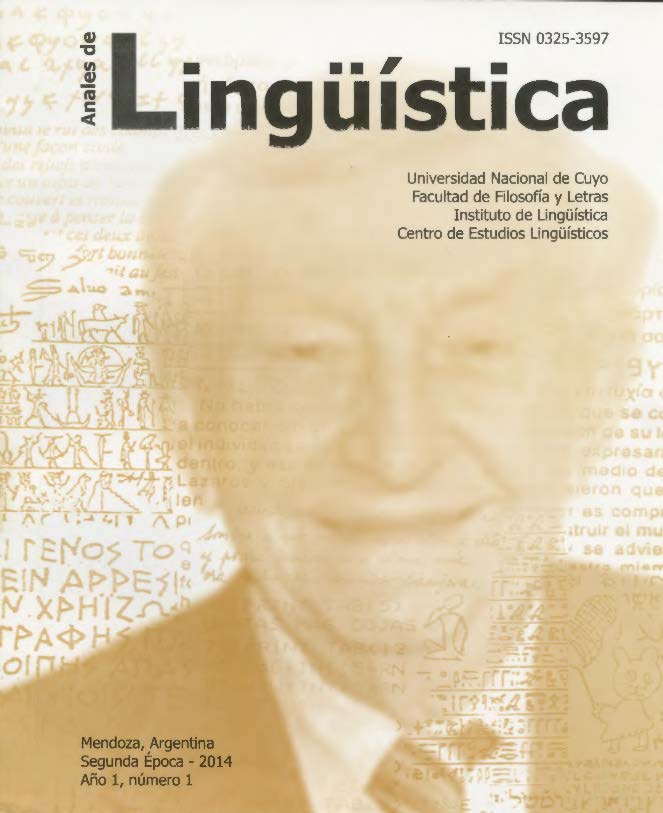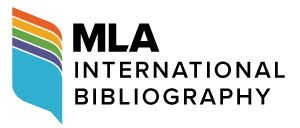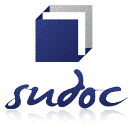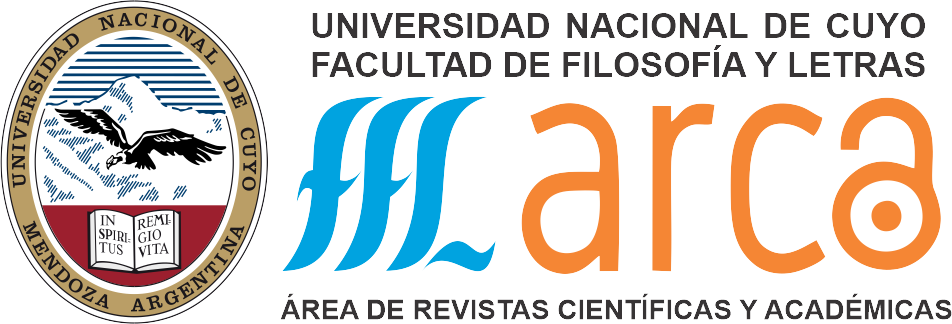Modulaciones del discurso en El biombo de Jorgelina Loubet
Palabras clave:
Discurso, Modulaciones del discurso, Discurso indirecto libre, Literatura argentina, Jorgelina LoubetResumen
La narrativa de Jorgelina Loubet (argentina 1918-1997) presenta un amplio campo para el análisis del discurso narrativo en sus diferentes modalidades. En el presente trabajo me propongo analizar la especial configuración discursiva del texto en relación con la voz y la focalización narrativas. Con esta finalidad, circunscribimos nuestro análisis a la novela El biombo (1963) en la que funcionalizo la clasificación del discurso aportada por Beltrán Almeria (1992) quien considera dieciocho variedades discursivas para expresar la voz o el pensamiento en la narrativa impersonal y en la personal. Si bien esta clasificación es amplia y detallada me ha resultado insuficiente al momento de abordar el análisis pormenorizado de la obra aludida. Tal
hecho, me ha llevado a reconocer una nueva modulación deldiscurso indirecto libre, no descripta por los teóricos aludidos, a la que he denominado discurso quasi indirecto libre. Dicha tenninologia se inspira en la denominación que Graciela Reyes (1984) utiliza para referirse al discurso indirecto libre: oratio quasi recta-. Denominación ~ue la autora utiliza para indicar la cercanía del discurso indirecto libre, con el discurso directo, -oratio recta- en lugar de la posible identificación que podria hacerse del discurso indirecto libre, con el discurso indirecto, avalada por la similitud terminológica. Del mismo modo, en el caso que analizo -y apropiándome de la terminología de Reyes (1 984)- utilizo el adverbio latino quasi para aludir a una modulación discursiva propia de la narrativa personal que, siendo muy cercana al discurso indirecto libre, presenta algunas condiciones que lo hacen diferente, tal como intentaré demostrar.
Citas
Adam, J. y Ubaldina Lorda, C. (1999). Lingüística de los textos narrativos. Barcelona: Ariel.
Bajtin, M. (1989). Teoría y estética de la novela. Trabaos de lnvastigación. Trad. Helena S. Kriúkova y Vicente Cazcarra. Madrid: Taurus.
Bajtin, M. (1992). Estética de la creación verbal. 5° ed. Trad. Tatiana Bubnova. México: Siglo XXI.
Bal, M. (1985). Teoría de la Narrativa (Una introducción a la narratologla). Madrid: Cátedra.
Beltrán Almería, L. (1992). Palabras transparentes. La configuración del discurso del personaje en la novela. Madrid: Cátedra.
Domínguez de Rodríguez-Pasqués, P. (1975). El discurso indirecto libre en la novela argentina. Pontificia Universidade Católica do Rlo Grande do Sul. Instituto de Letras e Artes. Curso de Pós-Graduaçao em Lingüistica e Letras.
Genette, G. (1989). Figuras III. Trad. Canos Manzano. Barcelona: Lumen.
Loubet, J. (1963). El biombo. Buenos Aires: Losada.
Reis, C. (1989). Fundamentos y técnicas del análisis literario. Madrid: Gredos.
Reisz de Rivarola, S. (1987). Voces y conciencias modelizantes en el relato literario ficcional. En: T. Todorov y otros (1987). La crisis de la lilerariedad (pp.125-154). Madrid: Taurus.
Reyes, G (1984). Polifonía textual. La citación en el relato literario. Madrid. Gredos.
Tacca, O. (1978). Las voces de la novela. Madrid: Gredos.
Tacca, O. (1986). El estilo indirecto libre y las maneras de narrar. Buenos Aires: Kapelusz.
Descargas
Publicado
Cómo citar
Número
Sección
Licencia
Derechos de autor 2014 Autor
Esta obra está bajo una Licencia Creative Commons Atribución 2.5 Argentina.
Los/as autores/as que publican en esta revista están de acuerdo con los siguientes términos:
1. Los/as autores conservan los derechos de autor y garantizan a la revista el derecho de ser la primera publicación del trabajo bajo una licecncia Creative Commons Atribución 2.5 Argentina (CC BY 2.5 AR) . Por esto pueden compartir el trabajo con la referencia explícita de la publicación original en esta revista.
2. Anales de lingüística permite y anima a los autores a difundir la publicación realizada electrónicamente, a través de su enlace y/o de la versión postprint del archivo descargado de forma independiente.
3. Usted es libre de:
Compartir — copiar y redistribuir el material en cualquier medio o formato
Adaptar — remezclar, transformar y construir a partir del material para cualquier propósito, incluso comercialmente.
















